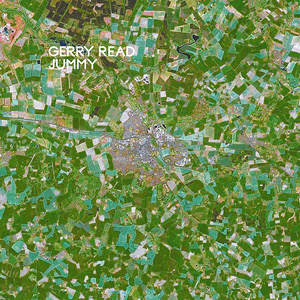Gerry Read Jummy
For those who have followed Gerry Read‘s string of exceptional 12″s over the past two […]

For those who have followed Gerry Read‘s string of exceptional 12″s over the past two years, his debut LP will sound familiar. On Jummy, there are no evolutionary surprises to be heard from the young producer, as his uniquely soulful and sloppy take on house music is displayed largely unaltered over almost an hour’s worth of tunes. Fortunately, this all works in Read’s favor, allowing his production style to show a considerable depth while proving to be just as alluring when presented in the long-player format.
One of the many ill-informed gripes that has been lobbed at dance music over the years is that it is just too stringent—that the perfectly quantized beats and razor-sharp elements somehow lack the natural mistakes and slightly “off” feel that give music its “human” element. The electronic-music community’s latest rebuttal to that claim is Jummy. No record this year has had such an effortless swing on each and every track; in particular, Read’s drums seem to always be playing a delightful game of catch-up, most rewardingly on the appropriately titled “Crawl” and “Let’s Make it Deeper,” where Read amasses processions of lopsided drum loops anchored with stuttering kicks and led by assemblages of airy rides and hats. Read also chooses to keep his drum sounds well on the dusty side of the spectrum across the LP, pushing a fair amount of crackles, hiss, and overdrive alongside the thick, roomy tones of his kits. His samples—cut, chopped, and rearranged to form unexpected collages—take on a similar tonality, bearing traces of the static fuzz of a record player or the blurred sonic image of filtered chords. In the end, the swinging beats and soul-tinged arrangement of samples work together to give the record a “jazzy” feel, something like the deeper fringes of Midwestern house, but with an extra emphasis on abstract and odd sound palettes.
One of Jummy‘s strongest attributes is that it’s an extremely well-paced record. Not only do the tracks flow seamlessly into one another, but each song displays a willingness to hold back for extended periods in order to push listeners beyond the normal rise-and-fall structures of dance music. Often on the LP, Read will lock into a stripped-back groove first, relying on the strength of his low-swung drum and percussion patterns to entice the listener before slowly unfolding a series of bent and reshaped samples. Essentially, many of the songs here are simply beats; the initial sections of drums lead to a sample-based musical idea (reinforced by matching low end) which is gradually reshaped until the track is through. While the premise may seem simple, the variety of worthwhile takes on the formula that Read comes up with is exceptional and the highlights are many—”Evidence,” “Be Pushin (She),” and the scat-sampling “Make a Move” (which comes off like a druggier, but more sophisticated version of FlyLo’s “Do the Astral Plane”) account for the record’s most memorable moments.
In his Bubblin’ Up profile from earlier this year, Read hinted that his debut full-length would be more of an excercise in heaphone listening than outright club fare, and for the most part, Jummy has delivered on that point. Even the more rolling and kick-heavy offerings found on the LP are far from obvious dancefloor tracks, the layers of dust and grit making for vivid textures but perhaps not the most propulsive of club tunes. Still, it’d be a shame to write off this record simply as headphone music—what it may lack in sound system-minded sonics it makes up for with its distinctive mix of cacophonous rhythms and touches of warped soul that result in what is, simply put, an accomplished debut LP full of inventive house music.

